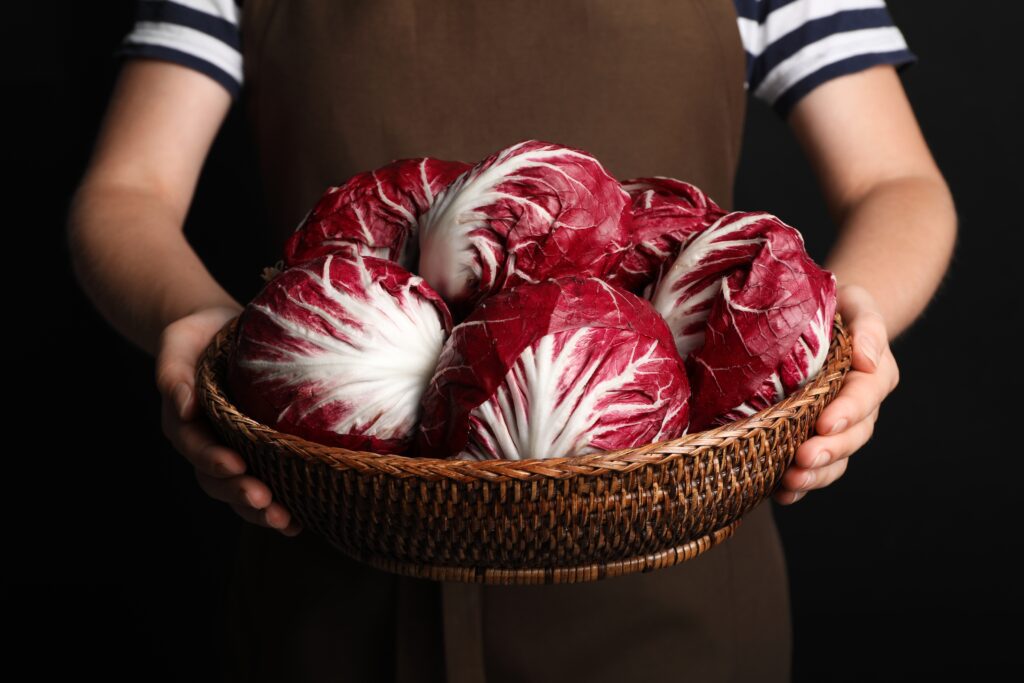Embracing the Winter Gem: The Versatile and Vivid Radicchio
As winter’s chill takes hold, a unique and vibrant vegetable emerges as a culinary favorite: radicchio. This chicory variant, with its rich history and distinct bitter taste, is more than just a colorful addition to the plate. Understanding and utilizing radicchio can transform your winter meals into a celebration of flavors and textures.

The Rise of Radicchio: A Historical Overview
For centuries, Radicchio has been an essential ingredient in Italian cuisine, with each region cultivating its own variety. Notable types like Treviso, Castelfranco, and Chioggia reflect the diverse culinary traditions across Italy. Despite its widespread cultivation in various countries today, radicchio retains its cultural significance, especially in Italian winter dishes.
Understanding the Bitter Beauty
Radicchio’s signature bitterness is often misunderstood and underappreciated. This flavor results from a natural chemical reaction in the leaves. However, cultivation methods significantly affect the intensity of this bitterness. Small-scale growers often use traditional techniques like waiting for the first frost or employing forced growing to enhance the flavor and texture. These methods yield a radicchio that is bitter yet balanced, with a complex and desirable taste profile.
Varieties to Savor
Each variety of radicchio offers a unique taste and texture:
Chioggia: Common in supermarkets, this type resembles red cabbage and adds an astringent bite to dishes.
Castelfranco: Known for its speckled leaves and mild, creamy flavor, ideal for simple salads.
Treviso: Oblong and mild, perfect for scooping up dips or holding cheese and meats.
Tardivo: Distinguished by deep purple, curly leaves, this hearty variety has a genuine flavor and sturdy leaf.
Rosa del Veneto: With tender, rosy pink leaves, this variety adds a hint of sweetness and visual appeal.
Culinary Creations with Radicchio
Radicchio can be transformed in the kitchen, whether used raw in salads or cooked to mellow its bitterness. When raw, its crisp texture and vibrant hue enhance salads and toppings. Cooking radicchio, through roasting or wilting into dishes, brings out its natural sugars, softening the bitter edge. Soaking chopped radicchio in cold water can also temper the bitterness, especially useful for raw preparations.
Flavor pairings are crucial with radicchio. Pair it with sweet elements like honey or dried fruits, acidic components such as citrus or vinegar, and fatty ingredients like cheese or nuts to create a harmonious dish.

Storing and Prepping
To maintain its freshness, store radicchio in the refrigerator covered with an opaque material. Preparation varies with recipes, but generally involves removing outer leaves, slicing or chopping, and cleaning off any dirt or grit.
Radicchio is not just a vegetable; it’s a winter culinary adventure waiting to be explored. Its distinctive flavor profile, many varieties, and versatility in cooking make it a valuable addition to your kitchen repertoire. As you embrace the colder months, let radicchio bring color, crunch, and a new dimension of taste to your meals.
